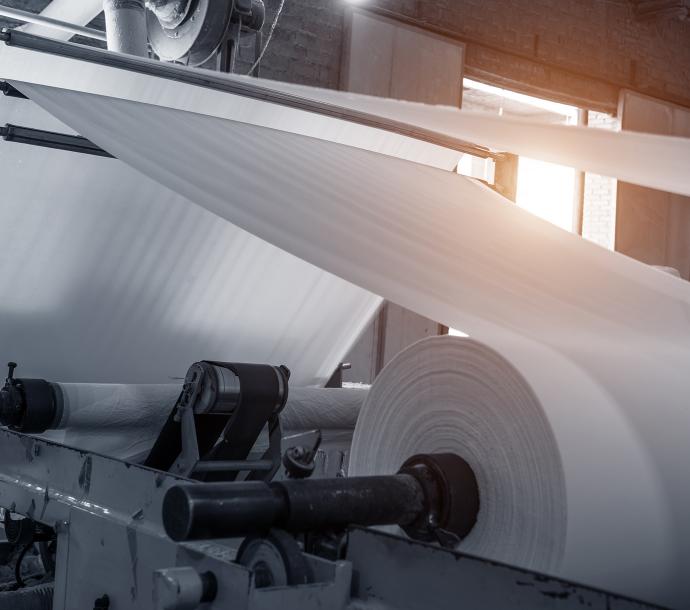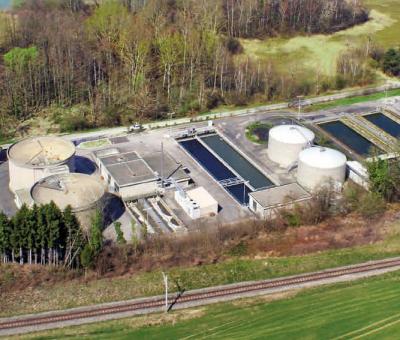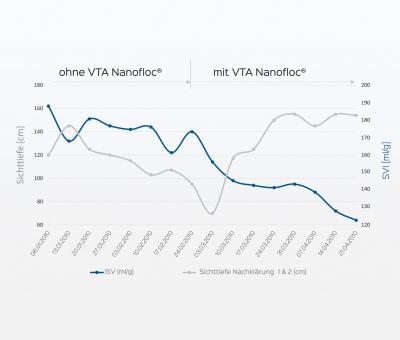The treatment of wastewater in the paper industry is a challenge. A recent example from Bavaria shows how VTA system products ensure the best results even under difficult conditions. Reliable, 365 days a year.
Europe’s most efficient coreboard plant is located in Brunnenthal in the Bavarian Vogtland region: each year, the Carl Macher paper mill, a Kunert Group company, produces around 140,000 tonnes of this high-quality material, which is used to manufacture packaging for a wide variety of goods ranging from snack foods to tennis balls.
The wastewater from cardboard production, which uses 100% recycled paper, is treated onsite in a wastewater treatment plant operated by SüdWasser. The 115,000-PE plant is made up of two elements: the two SBR plants are preceded by three UASB reactors, where most of the organic degradation takes place under anaerobic conditions; in the case of COD, this is almost 80 percent. The treated wastewater flows directly into the river Saale.
BIOLOGY OVERLOADED AND INHIBITED
As in most industrial wastewater treatment plants, the plant’s biology has to cope with difficult conditions, in particular with regard to operational impact loads and one-sided nutrient ratios.
“We’re used to that”, says Uli Seifert, who has been plant manager for 16 years. But in February this year, he and his team had to contend with severe problems: the degradation capacity in the anaerobic reactors deteriorated, meaning that the downstream SBR plant was overloaded and inhibited.
“COD degradation, settleability of the activated sludge, and the sludge volume index were all close to the limit”, recalls Seifert.
ALARMING ANALYSIS
Accordingly, the first analytical findings of the VTA biologists were alarming: the microscope image showed floc decomposition caused by filamentous bacteria (more on this in the information section on page 12). VTA technician Bernhard Scheuringer, who has a great deal of experience with paper mills, used a combination of two VTA system products.
- VTA Biokat® was introduced into the activated sludge inflow, in a recipe especially prepared for Macher. Specific microorganisms, cultivated in the VTA fermenter, were used in an effort to reinforce biocoenosis and promote its recovery.
- VTA Nanofloc® was introduced directly into the biology and immediately brought about a massive increase in floc density, treatment capacity and oxygen transfer.
CONTAMINANTS SAFELY UNDER CONTROL
“Within 14 days, we had perfect treatment capacity and absolute plant reliability, and that is still the case today”, reports the plant manager. Although contaminants that attack the biology continue to get into the wastewater – which is unavoidable for operational reasons – the strong VTA duo nevertheless ensures optimum, sustainable treatment capacity at the plant.
Continuous sample analysis and readjustment ensure that this remains the case. Because production at Carl Macher runs around the clock and 365 days a year, operational reliability is a top priority for the plant manager. A shutdown due to an overburdened wastewater treatment plant would be an economic disaster.
Praxisbericht aus dem Wissensmagazin der VTA Gruppe „Der Laubfrosch“, Ausgabe 73
Uli Seifert
Plant manager
'Other experts have tried to solve the problem before. VTA actually did it. I can now go home after work and at the weekend reassured, because I know you can rely on VTA!'





